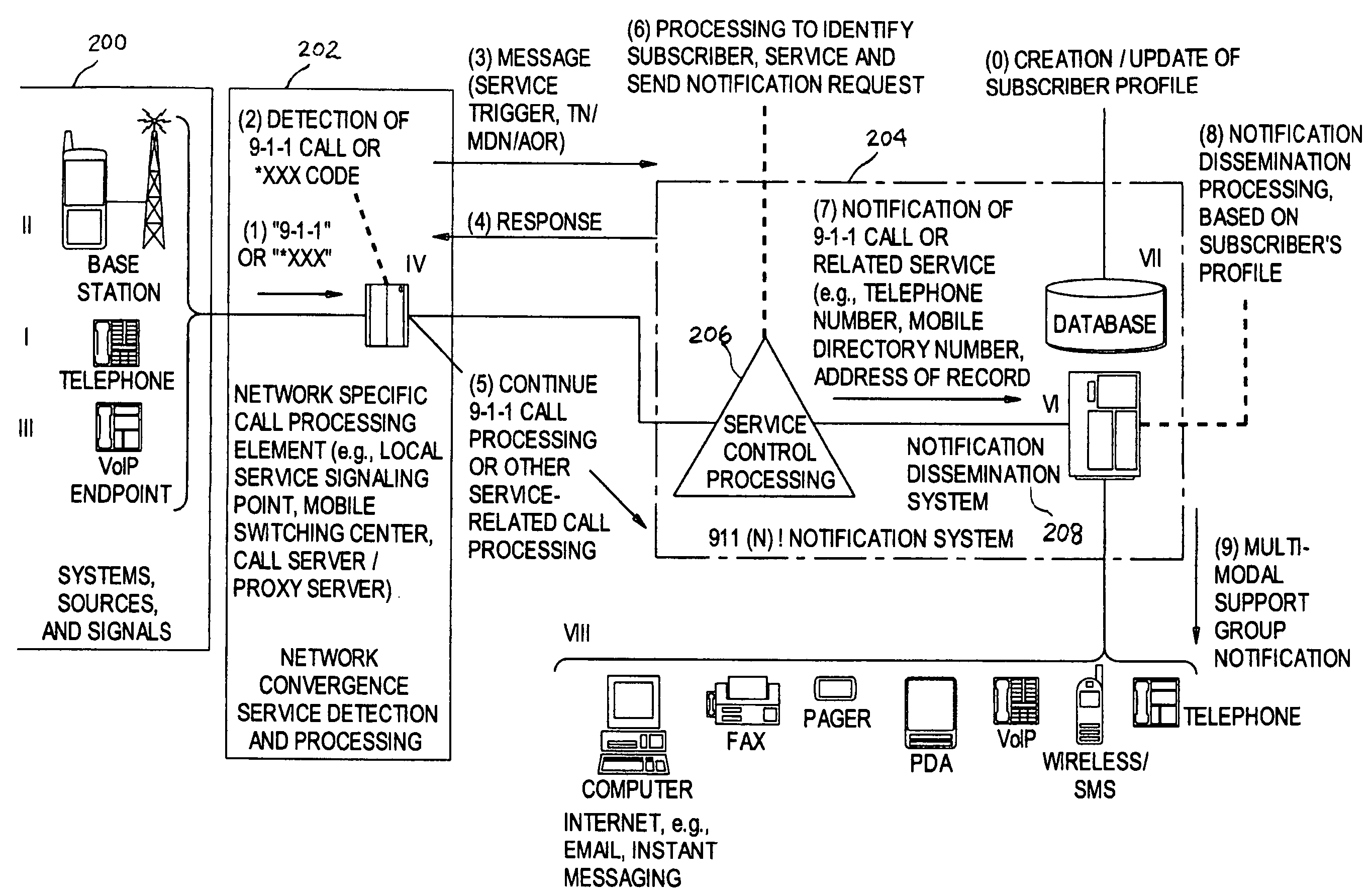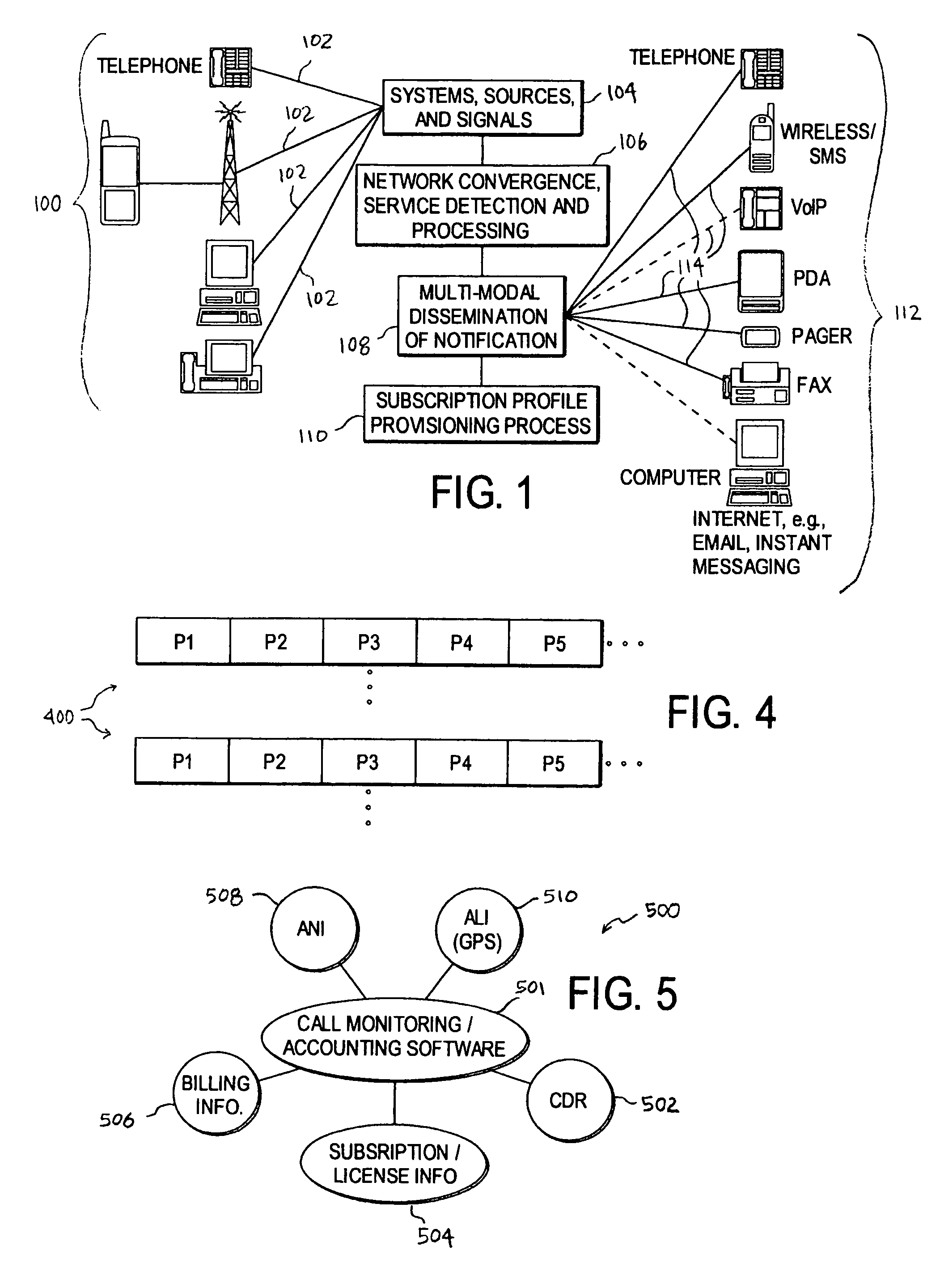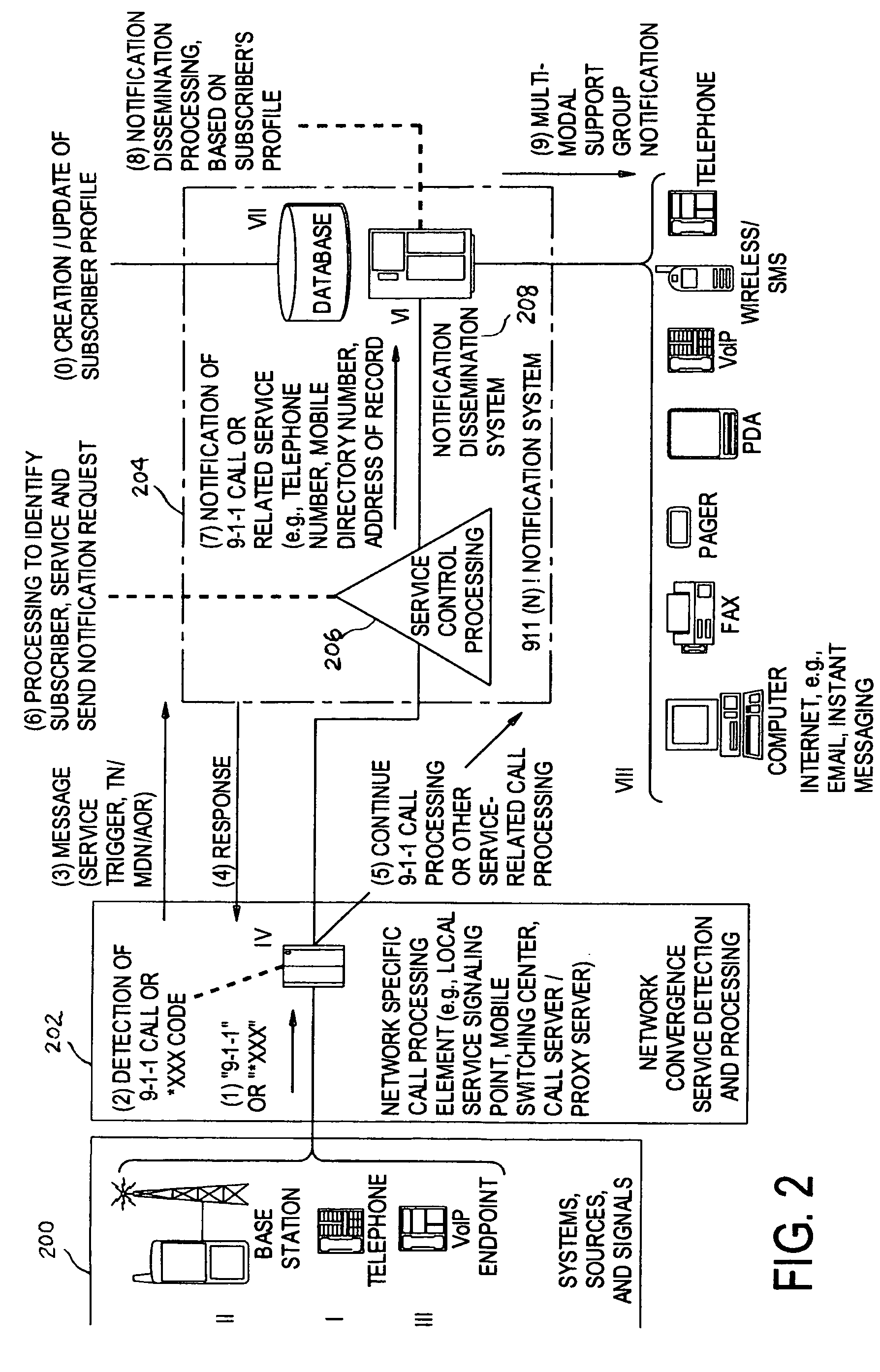System and method for vital communications connectivity
a vital communication and system technology, applied in the field of vital communications connectivity, can solve the problems of not being able to meet individual subscriber requirements, not being able to easily modify services, and not being able to offer services across the service area of an operator, etc., to achieve the effect of facilitating individual subscriber requirements, reducing the cost of services, and reducing the service life of subscribers
- Summary
- Abstract
- Description
- Claims
- Application Information
AI Technical Summary
Benefits of technology
Problems solved by technology
Method used
Image
Examples
Embodiment Construction
[0175] Several preferred embodiments of the invention are described for illustrative purposes, it being understood that the invention may be embodied in other forms not specifically shown in the drawings. In general, the embodiments may be presented through stand-alone systems located at one, few, or many sites, or through one, few, or many hosting sites that may be further linked through a master server or master notification server.
[0176] The present invention involves a method of distributing information to pre-selected or designated information recipients. It also involves a method of alerting those recipients of the fact that someone has initiated a call to a number of interest, including emergency numbers. The present invention also involves a method of maintaining a subscription service related to distributing information and alerting recipients when someone has initiated an emergency call.
[0177] In order to understand the functioning of the system, it is important to descr...
PUM
 Login to View More
Login to View More Abstract
Description
Claims
Application Information
 Login to View More
Login to View More - R&D
- Intellectual Property
- Life Sciences
- Materials
- Tech Scout
- Unparalleled Data Quality
- Higher Quality Content
- 60% Fewer Hallucinations
Browse by: Latest US Patents, China's latest patents, Technical Efficacy Thesaurus, Application Domain, Technology Topic, Popular Technical Reports.
© 2025 PatSnap. All rights reserved.Legal|Privacy policy|Modern Slavery Act Transparency Statement|Sitemap|About US| Contact US: help@patsnap.com



